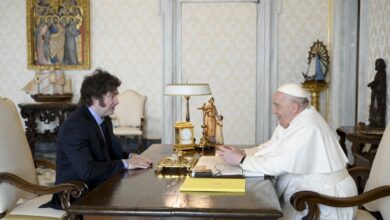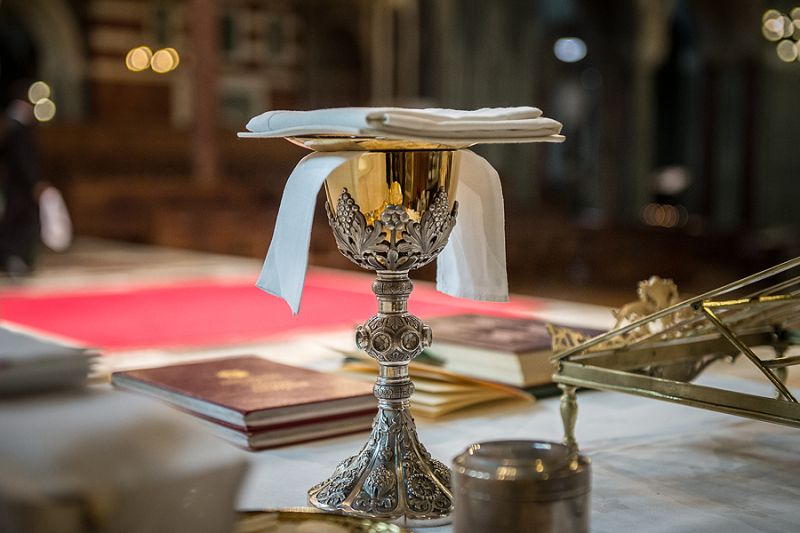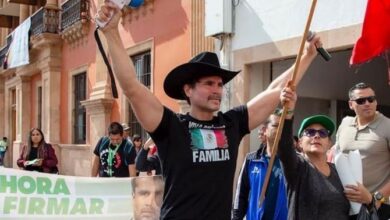American professor who founded school in Artsakh says Christians there are starving
 Students on the first day of school in September 2021 at the Antonia Arslan Armenian-Italian Hamalir in Stepanakert, Artsakh. The school was “established in order to help the Artsakhtsi strengthen and rebuild” and offers a variety of courses, programs, and educational opportunities. / Photo courtesy of Siobhan Nash-Marshall
Students on the first day of school in September 2021 at the Antonia Arslan Armenian-Italian Hamalir in Stepanakert, Artsakh. The school was “established in order to help the Artsakhtsi strengthen and rebuild” and offers a variety of courses, programs, and educational opportunities. / Photo courtesy of Siobhan Nash-Marshall Washington, D.C. Newsroom, Sep 9, 2023 / 06:00 am (CNA).
At the time of this writing, more than 120,000 Christian Armenians are currently trapped — without food, gas, or medicine — behind a blockade of the Nagorno-Karabakh region maintained by the Muslim-majority nation of Azerbaijan.
Azerbaijan and Armenia have been fighting over the enclave since 1988. Experts say Armenians seek to retain their hold on this autonomous region they call “Artsakh” while Azerbaijan wants to expel the Armenian Christian population to solidify its power in the region. Meanwhile, the situation grows more desperate for the people there as the days pass.
While not Armenian herself, Siobhan Nash-Marshall has been working in Artsakh for almost 10 years. A professor of philosophy at Manhattanville College in New York, Nash-Marshall is a prolific author and writer and founded the Christians in Need Foundation (CINF) in 2011 to assist the people of Artsakh. She recently spoke to CNA about her work for Armenian Christians in Artsakh, the current situation, and how Catholics and people of goodwill can help.

Zoe Romanowsky/CNA: Tell me a little bit about the Christian community in Artsakh. How many Catholics are there and what is the Christian community like right now?
Siobhan Nash-Marshall: Catholics are a very small minority in Armenia. And there’s a simple reason for that: Armenia never made it to the Council of Chalcedon — in part because they were being invaded for the umpteenth time. Some Armenians became Catholic during the Crusades, and Pope Leo XIII set up a Pontifical Armenian College for them in Rome. But that’s basically the history of Catholics there.
Armenia itself is the first Christian nation. Their official conversion date as a nation is 301, beating the Edict of Milan and Constantine.
St. Jude Thaddeus and St. Bartholomew were the apostles who went to Armenia. Whenever you see an icon or image of St. Jude, he’s always holding an image in his hands, and many think it’s one of the sacred images we have of Jesus — you know, the shroud or the Manoppello image. We know that the shroud was in Edessa for a long time, and Edessa was an Armenian city at that time, called Urfa.
A wonderful piece of Armenian oral history, written down by their oldest historian Moses of Chorene (or “Movses Chorenatsi” as the Armenians call him), is a story that goes like this: The king of Armenia at that time was not very well. His name was Apgar and he had quite a few Jews living in Edessa at that time. He heard about Jesus and wrote a letter saying, “My sources tell me that you’re doing all these amazing things so you’ve either got to be God, or the Son of God. And my sources also tell me that you’re in great danger and that they want to kill you down there. So why don’t you come up to my town? It’s not a big one, but it’s big enough for both of us.”
This story is in their chronicles from the fourth century and it kind of fits with the history because when they did all that testing on the shroud years ago, they found that it was in Edessa for many centuries.
Why is this history important for understanding Armenians?
Their identity is completely grounded in faith… “I’m Armenian therefore I’m a Christian.” Their history is bound up with their identity.
Most Americans know very little about Armenia and Azerbaijan, including the enclave of Artsakh. Why should we be paying attention to this area of the world right now?
The Armenian genocide in 1915 was probably the most successful genocide in the 20th century — it not only killed three-quarters of the population, it changed all the names of the cities and destroyed all the churches. So it de-Christianized the lands in that part of Armenia (the west), which was under the Ottoman Empire.
The part of Armenia that was under the Russians — because the Russians had conquered it — wasn’t subject to genocide. It came under Soviet power, and Stalin and Lenin decided that in order to get Turkey on their side, they would give two parts of it to Turkey. They also decided they would give two parts of Armenia to Azerbaijan. One of those parts was Artsakh. So what you have is the Soviets brokering these lands in order to get allegiances. They knew full well that the Turks and the Azeris hated the Armenians.
When Stalin gave Artsakh to Azerbaijan in 1923, Artsakh immediately asked to become an oblast (an autonomous province with its own government). So diplomatically it was never technically a part of Azerbaijan because it was an autonomous region within the borders.
What happened over the 20th century was that Azerbaijan took the other autonomous Armenian province called Nakhichevan and literally wiped it clean of Armenians. Not by killing them directly — mostly by making their lives impossible there so they went to live in Armenia. But they also destroyed all the churches and have dug up the foundations of all of the churches. That’s particularly egregious because we can usually tell from satellite imagery or other things what was on a piece of land in its history… But if you dig up the foundations, you can no longer see the history on the land.
About 20 years ago, Azerbaijan destroyed about 10,000 Armenian stone crosses. Whenever Armenians have an important memorial event or something, they stick up stone crosses — they dot the Armenian landscape. They were UNESCO-protected, and we have footage of Azeris destroying and crushing them.
So there is this deep hatred between the Azeris and the Armenians. And we know full well why this is and what the fate of those Armenians in Artsakh would be in Azeri hands.
What’s particularly important for me, personally, and as a Catholic, a Christian, is that what they have on their land is really the patrimony of all Christians. One of them is a monastery called Dadivank — Dadi’s monastery. Dadi was a disciple of St. Jude Thaddeus, so the roots of that monastery date back to the first century. It is the most beautiful thing I’ve ever seen in my life. And we’ll lose all that.
There’s something about being Catholic that very much has to do with the concrete — we want to touch things. We know that the history is real and we can touch it. So we’re losing a part of our history there. It belongs to everyone and they are the guardians of it. And they know that. So [if we allow Artsakh to be destroyed] we’ll lose a piece of our own history, a piece of our own world.
Tell me about your own connection to Artsakh and how you got involved there.
I was one of those strange Americans who was raised knowing about the Armenian genocide. I always knew that they’re “the martyr nation of Christianity” — that’s what John Paul II called them.
That said, my godmother is half-Armenian and half-Italian. Her name is Antonia Arslan and she is an extraordinary person, as well as famous. She’s an extraordinary writer and was a university professor. She and I were invited to inaugurate the genocide memorial in Artsakh in 2015 and that was my first trip. I’ve been back seven or eight times and I love the place because it really is beautiful and feels holy.
I’d been trying with my foundation to help Christians there. When you look at the graphics of the Middle East, it’s horrifying because the Christian presence, since the beginning of the 20th century, is being erased.
Right before the Armenian genocide — which didn’t only hit the Armenians, by the way — modern-day Turkey was roughly about 25% Christian. After World War I, it was down to less than 1%. It was systematic. And again during the Syrian war, the war in Iraq… the people who were hit the worst in this region were the Christians. Everyone knows this so I’m not saying anything that’s controversial. But I wanted to help them.

Initially, I tried to get students scholarships and have them come to study with me at the college, but it wasn’t possible because the State Department at that time — we’re talking 2010, 2011 — didn’t want Middle Eastern Christians coming to this country. When you have potential students already accepted and crossing war zones to get to an American consulate and then they find out their visa has been denied for reasons unknown to anyone… it’s tragic.
So I decided to turn the equation around — we’ll go there. And when I went to Artsakh, they said, “We love this; how many people can you send?” So I sent my graduates there to teach English, logic, ethics… And then what happened was the war broke out in 2020. By then I had many friends there so I knew exactly what was going on because they would call me.
Your foundation started a school there — can you share more about it?
After the war — we’re talking November 2020 — friends contacted me and asked if the foundation could build a school there. And I said yes. My idea was to get Italian artisans to Artsakh to teach the beauty of Italian craftsmanship. So we sent carpenters and $ 40,000 worth of equipment for carpentry. I also sent tailors there — one was a master tailor for Valentino. And they had these beautiful classes and it was wonderful to see.
The stories are just so beautiful because once you start something like this, people respond with great generosity. One of the carpenters donated part of the equipment. He said, “This is just too important; we’ve got to get this done.”
So I figured we can help them, and then when the time comes, they can teach us again how to do it.
The foundation supports the school, which has three components — a school, a vocational program, and a summer program. All together it currently serves 612 students from the ages of 4 to 27. It starts from kindergarten and goes all the way up.

Has the school been able to operate since the blockade?
They’re operating all right, but the problem is that they’re starving. And it’s not just that they’re starving, but they have no gas. So that means that the buses can’t function, the cars can’t function, and we can’t get students to school.
So, out of the 612 students, 300 who live in the countryside have told us they can’t make it, they can’t move. We don’t realize how dependent we are, all of us, on gas and electricity. But part of the problem with food is that they need gas to dry the wheat so they can mill it and they don’t have that.
The blockade has prevented everything from getting through?
That’s exactly right. Since Dec. 12 when it started, Western powers have denounced it, they have said “open the corridor,” but no one has done anything about it.
Why is that do you think?
There are many reasons. The most immediate excuse is that Azerbaijan has Europe by the short hairs because they give them gas. Europe can’t survive without gas.
And then there’s the Ukraine situation… Russian gas is being sanctioned, but what the Russians have done is pipe it through Azerbaijan. So they’re reportedly selling it; they got around the sanctions.
But this puts Azerbaijan in a very strong position politically — they can threaten Europe to cut off the gas.
The deeper reason, in my view as a Catholic, is that at the end of the day, it’s what you believe in that determines what you think is possible. We all have to give up something at times. And what you believe in is going to determine what you think you can sacrifice. I think there’s a huge crisis of faith in Europe, so they don’t want to sacrifice their comfort. And they could, and we could, too. So the deeper reason no one has done anything is that I think very few people actually believe that their own comfort is something that can be sacrificed. I’m sorry to be cruel, but that’s my opinion.
And it’s not just mine. In the recent hearing of the Tom Lantos Human Rights Commission, the courageous Rep. Chris Smith, (R-New Jersey) publicly asked “whether there is, in our own government, any true will to help.”
So what can be done for the Christians in Artsakh?
First of all, the prince of Liechtenstein has announced that he’s going to help organize an airlift for them. We’re going to do a balloon lift — Latin crosses on every balloon and the CINF logo. We want to show that it’s the Catholics doing this, Western Christians doing this for our brothers. Because if Armenia tries to do this, and they did, they’ll be blocked.
But if Catholics do this, and we take the responsibility for it — and I’m perfectly happy to take the responsibility for it — they can’t stop us. I mean, our numbers help us. There are over a billion Catholics in the world.
Can you tell me more about this plan?
We’re going to send weather balloons — 100 of them — each can lift 10 pounds. So attached to each will be about 10 pounds of flour, food, and medicinals. Granted, that’s not a lot, but it’s something. We’re hoping that if we show it can be done, then others will get the courage to do the same.
As for the launching spot, that’s one of the things I need to leave in the dark. As for the date, it will be this month — that’s the hope.
Anything else people can do to help?
They can support CINF to help the people there.
Also, if they are willing and able to come help us with our balloons, they should!
They can also contact their representatives and tell them they care about this issue and want to stand with the people of Artsakh (Nagorno Karabakh).





